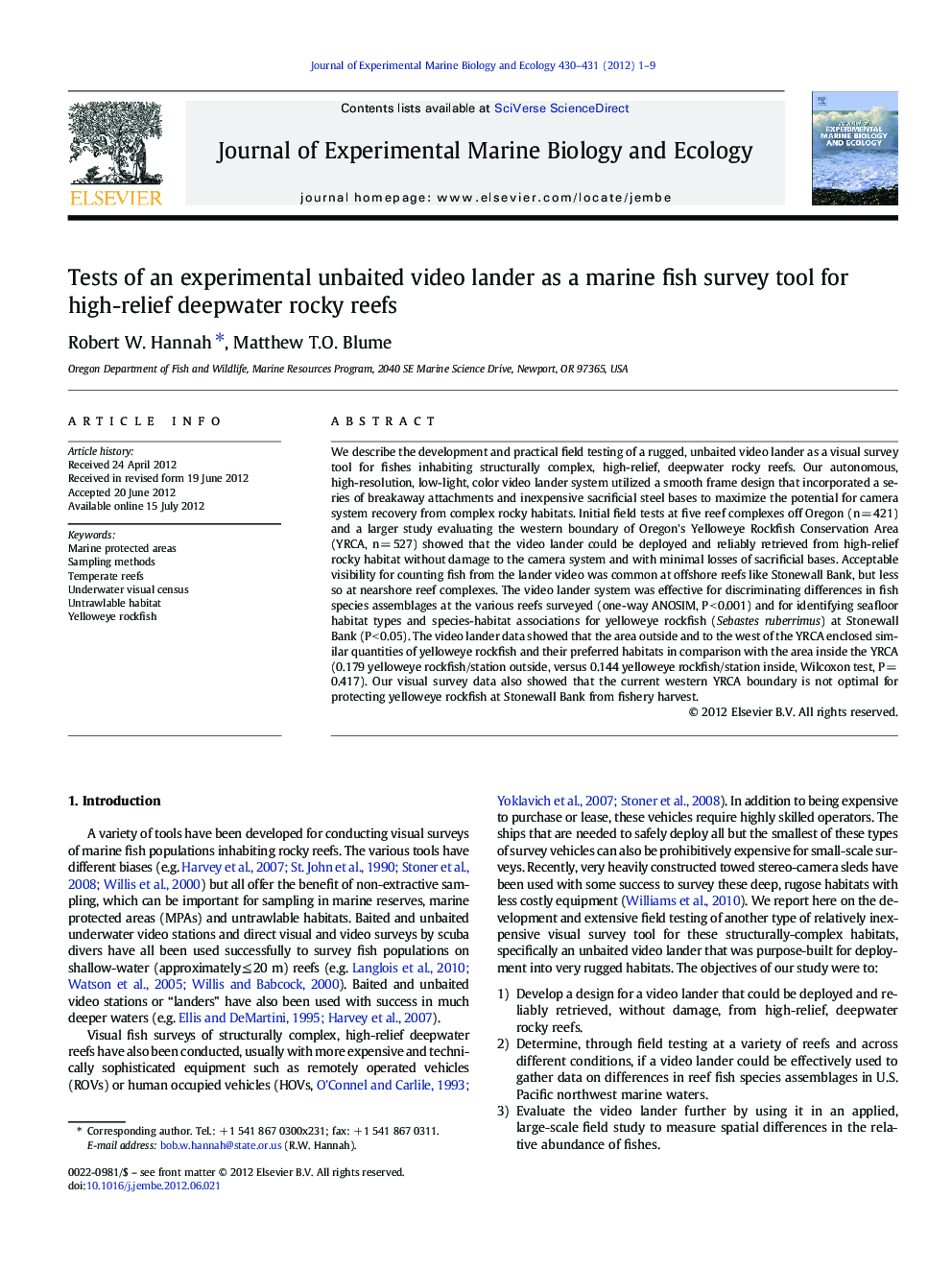| Article ID | Journal | Published Year | Pages | File Type |
|---|---|---|---|---|
| 4395849 | Journal of Experimental Marine Biology and Ecology | 2012 | 9 Pages |
We describe the development and practical field testing of a rugged, unbaited video lander as a visual survey tool for fishes inhabiting structurally complex, high-relief, deepwater rocky reefs. Our autonomous, high-resolution, low-light, color video lander system utilized a smooth frame design that incorporated a series of breakaway attachments and inexpensive sacrificial steel bases to maximize the potential for camera system recovery from complex rocky habitats. Initial field tests at five reef complexes off Oregon (n = 421) and a larger study evaluating the western boundary of Oregon's Yelloweye Rockfish Conservation Area (YRCA, n = 527) showed that the video lander could be deployed and reliably retrieved from high-relief rocky habitat without damage to the camera system and with minimal losses of sacrificial bases. Acceptable visibility for counting fish from the lander video was common at offshore reefs like Stonewall Bank, but less so at nearshore reef complexes. The video lander system was effective for discriminating differences in fish species assemblages at the various reefs surveyed (one-way ANOSIM, P < 0.001) and for identifying seafloor habitat types and species-habitat associations for yelloweye rockfish (Sebastes ruberrimus) at Stonewall Bank (P < 0.05). The video lander data showed that the area outside and to the west of the YRCA enclosed similar quantities of yelloweye rockfish and their preferred habitats in comparison with the area inside the YRCA (0.179 yelloweye rockfish/station outside, versus 0.144 yelloweye rockfish/station inside, Wilcoxon test, P = 0.417). Our visual survey data also showed that the current western YRCA boundary is not optimal for protecting yelloweye rockfish at Stonewall Bank from fishery harvest.
► An unbaited video lander was tested as a survey tool for deepwater rocky reefs. ► The design used breakaway components to aid the retrieval of undamaged equipment. ► Field tests showed high retrievability. ► Differences in species assemblages, abundance and habitat associations were shown.
